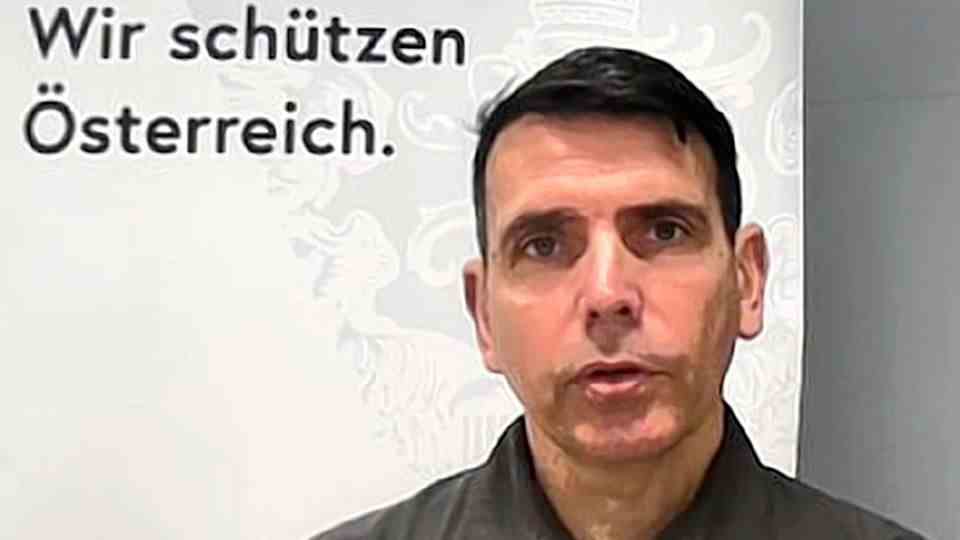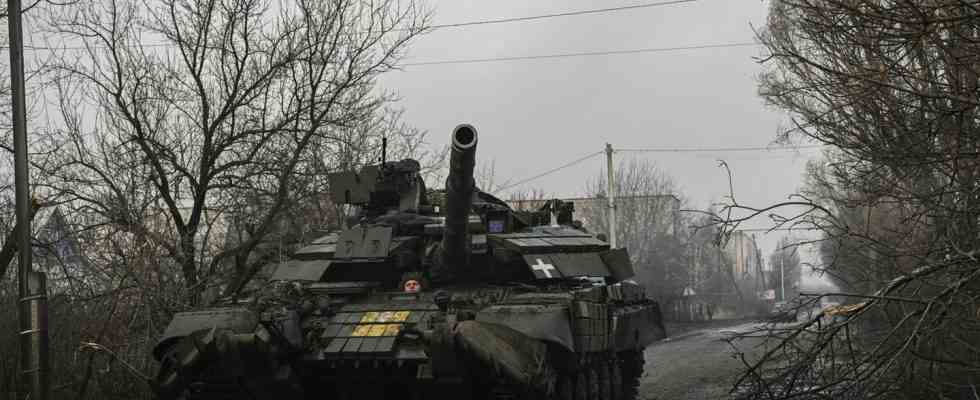For months, the Bakhmut fortress defied Russian attacks. Now she is almost trapped. Russia has suffered heavy losses, but Kiev cannot afford to make any mistakes now.
The case of Bakhmut is imminent, its classification is complex. Because it is neither a roaring victory for Russia nor a highlight for Ukraine. First the positives: Bakhmut lies like a breakwater in front of the last chain of cities in the Donbass held by Kiev. The fortified city shields cities like Kramatorsk. In this form of warfare, Bakhmut Fortress cannot be bypassed. There would have been no point in giving up the city early because it would only have brought relief for a very short time. As Ukrainian military and President Zelensky rightly pointed out, just weeks after an eviction, Kiev would have been forced to endure the same form of fighting, only in the next city. In addition, Bachmut was well suited for defense. It is a compact city, separated from the surrounding countryside, which dominates the area with its factories and high-rise buildings. In addition, river courses, heights and forests favor the defenders.
bought time
Since the fall of the neighboring cities of Severodonetsk and Lisichansk in the summer of 2022, the Russians have not managed to conquer Donbass on a large scale. Since then, the Bakhmut fortress has attracted Russian attacks and resisted Putin’s troops. That alone is a great achievement. This is how Russia, in the role of conqueror, has been prevented from achieving further war goals for more than half a year. Should Bakhmut fall after all, the Ukrainian victims have bought the country a lot of time. The conquest of the heap of rubble can hardly be sold as a great victory for Moscow. In addition, if Kiev manages to move into new positions nearby, the Russian advance will initially only affect the almost surrounded front bulge around the city.

The city of Kiev bought time for more than half a year. But it is also true that this time will come to an end with the fall of the city – and Kiev could not prevent Moscow from finally conquering the city. With such fortresses Kiev can tie up and exhaust the Russian forces, but not achieve any victories of its own. Battles like the one in Bachmut are therefore not a long-term solution. The sacrifice of the troops in Bakhmut only makes sense if Kiev manages to raise new armored troops, refresh old units and conduct a successful and large-scale operation elsewhere.
For example, if the Ukrainian armed forces can advance to the Black Sea and thus cut through the land bridge from Donbass to Crimea. If such an offensive succeeds, the sacrifice would be justified. However, if Ukrainian forces fail to make impressive reconquests this year, the outcome of the Battle of Bakhmut will be much smaller. Then only time was bought on the road to defeat.
Victory without brilliance
For Russia, the yield looks modest anyway. It is true that the city has enormous military importance, which will be downplayed in the event of a Ukrainian defeat. Not because the city itself is important, but because it protects the few Donbass cities that are still under Kiev control as an upstream “fortress”. If it falls, the road is clear for the complete conquest of the Donbass – but it will be just as tedious should Moscow not dare bolder operations. There is no reason for triumphal and victory marches. The conquest was too slow and costly to be proud of. But even without glamor: Kiev can book the gain in time, Moscow the gain in space.
The strategy of the meat grinder
The question of the losses remains. The fighting in the Donbass corresponds to the strategy of a meat grinder, the German term from the First World War is “blood mill”. Both sides work according to this recipe. The actual aim of the fights is to inflict casualties on the opponent and keep your own low. Losses count not only the dead, but also the missing, the prisoners and the permanently injured. The actual number of casualties by both sides are unknown. Both Kiev and Moscow inflate their opponent’s losses and downplay their own. What is certain is that the battle for Bachmut was and is costly. It can also be assumed that the Wagner group had to accept very high losses in the phase when poorly trained convicts were driven into battle.
Heavy Russian losses
The Kiev PR reports about human wave attacks should be treated with caution, as should the recent information that Wagner mercenaries only have to attack armed with shovels. In general, it is assumed that the attackers here, ie the Russians in the urban area, suffer significantly higher losses than the defenders. However, the principle only applies when there is a literal assault of infantry on buildings and trenches. However, most of the deaths in Bachmut are likely to fall victim to long-range weapons, i.e. drones, artillery, guided missiles and snipers. If the position of a group of soldiers is spotted and they are engaged with ranged weapons, the infantrymen take the casualties regardless of whether they are “attackers” or “defenders” in the larger perspective. Another problem is that Putin can take far heavier casualties than Zelensky. Russia has a larger population than Ukraine. In order to win the logic of the “meat grinder”, far more Russians than Ukrainians have to die. The Russian military likes to use minorities from remote areas for this purpose, and the Wagner mercenaries even use serious criminals. These losses are hardly noticed in the Russian centers like Moscow and St. Petersburg, quite differently in Ukraine.
reversal of circumstances
Even if one can assume that the Russians suffered heavy losses during the encirclement of Bakhmut, Kiev’s advantage threatens to dwindle in the final phase of the fighting. The city has been surrounded on three sides for a few days, only a narrow neck still leads into the front bulge. In Soviet military doctrine, this is called a “tactical cauldron”. The entrance is still open, but it can be seen by the enemy and is within the effective area of effect of their weapons. The Russian encirclement on three sides makes it difficult for Ukraine to provide cover from outside fire for its own troops.
The Russians reached this state at the latest when they lost the heights north of the city. Now, according to the doctrine, their goal would be to maintain this situation, rather than trying to take the city quickly. Because, at least in theory, the attacker can now inflict heavy losses on the opponent without much risk to himself. Vehicles carrying reinforcements and ammunition into the city and wounded out are fired upon.
The Ukrainian soldiers can only move in small groups along dirt roads, and even there they can be tracked down and killed. At the same time, defending the rest of the city becomes more difficult. The smaller the area controlled by Kiev becomes, the more the troops have to switch to a static defense because positions can no longer be evacuated and relocated flexibly due to a lack of space. But once they are known to the opponent, he can calmly eliminate them with heavy weapons.
There is currently no indication that Kiev could break open the siege ring with a counter-offensive. If that doesn’t happen, everything depends on the Ukrainian military finding the right moment to pull the remaining troops out of the city with minor casualties. In the worst case, they would be trapped like in Mariupol, or they would have to fight their way through a Russian fire zone for miles. Then the Russians would have added another defeat to Ukraine like in Debaltseve in 2015.
Crucial for the assessment of the battle will be how Kiev manages to end it. If a retreat succeeds without significant losses, the Ukraine can claim the gain in time and the heavy attrition of the Russian forces. If it doesn’t work, then Putin’s meat grinder strategy has worked.


